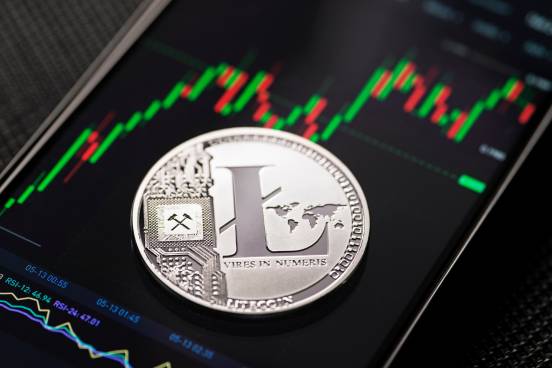The general public’s interest in cryptocurrencies has substantially changed during the last several years. Investors have noticed it as their interest in cryptocurrencies has grown over time.
This interest has centered mainly on Bitcoin, which has grown to be associated with making cryptocurrency billionaires and boosting user wealth.
Numerous additional cryptocurrencies have been formed or forked from Bitcoin since its founding.
One of these altcoins, or cryptocurrencies that are not Bitcoin is the Bitcoin fork Litecoin (LTC). While Litecoin and Bitcoin use identical primary blockchain and verification processes, a few significant distinctions might help you decide which is best for your interests and objectives. If you are wondering where to purchase Litecoin or Bitcoin, CEX.IO is the right place for you.

Bitcoin
The first cryptocurrency introduced in 2009 was Bitcoin. Since then, it has changed from being a curiosity to a contentious good, investment, and form of money.
To maintain the reliability and security of a centralized database known as a blockchain, it depends on decentralized and community processing power.
Several distinctive characteristics of Bitcoin include:
- Proof-of-work: The blockchain’s transaction and block validation process relies on the processing capacity of GPUs and, to a lesser extent, CPUs.
- It uses SHA-256: The cryptographic hash function that encrypts the blockchain. The hash function converts input to an output of a fixed length to encrypt it.
Litecoin
Charlie Lee, a former Google programmer, introduced Litecoin in 2011 by posting a message on a well-known Bitcoin forum. Charlie Lee described Litecoin as the “lite version of Bitcoin.” Since its inception, Litecoin has been perceived as a response to Bitcoin’s propensity toward centralization.
As a result, many of the characteristics that Lee and other Bitcoin developers thought were beneficial for Bitcoin in its early phases are adopted by Litecoin. The development team recognized that some parts of Litecoin still needed work. Among Litecoin’s traits are:
- Proof-of-work: Litecoin uses proof-of-work but relies on access to large amounts of memory rather than the central processing unit (CPU) or graphics processing unit (GPU) computing power.
- Uses Scrypt: Litcoin uses Scrypt to perform hashing. Scrypt employs SHA-256 but has substantially greater proof-of-work memory requirements. This is said to lessen its reliance on GPU arithmetic logic units (ALUs) and, consequently, ASIC mining equipment. Scrypt ASIC mining devices, however, weren’t developed until 2021. Therefore Litecoin might need to come up with another option.
Why Is Litecoin So Cheap?
Due to its higher supply than other cryptocurrencies and lower demand, Litecoin has a lower LTC/USD exchange rate and purchasing power.
Investor and consumer perspectives mainly cause this: if a medium of exchange can be used to buy more products, it has a higher value.
People are more likely to pay more for a good or investment if they perceive it to have a higher worth.
Bitcoin is currently valued higher since it is considered a more valuable asset.
Key Differences
Litecoin and Bitcoin differ most noticeably in their hashing algorithms. As was already noted, SHA-256, computed swiftly by the ALUs of graphics processing units, is the algorithm used by Bitcoin.
Market Capitalization
The market capitalization, or aggregate dollar value of all the issued coins, is another crucial distinction between Bitcoin and Litecoin. Because big farms and mining pools can mine it and there is such tremendous demand for it, the exchange rate of Bitcoin to dollars is much higher, and Bitcoin is more widely used.
Distribution
The total amount of coins each cryptocurrency may manufacture is one of the key differences between Bitcoin and Litecoin. In this respect, Litecoin stands out. In contrast to Litecoin, which can support 84 million coins, the Bitcoin network can never support more than 21 million coins.
Still, pricing for goods and investments is often determined by supply and demand and investor and consumer mood. Bitcoin’s price reflects that since both parties seem to think it reflects their interests, values, and financial objectives.
Transaction Speed
Although, in theory, transactions on the Bitcoin and Litecoin networks happen instantly, it takes some time for those transactions to be confirmed by other network users. Transaction speed was a priority when Litecoin was created.
The average confirmation time for a transaction on the Bitcoin network (the length of time it takes for a block to be validated and added to the blockchain) is about nine minutes.
However, depending on network load, this can vary greatly. For Litecoin, the corresponding time is approximately 2.5 minutes.
Future of Litecoin
Investor and consumer sentiment will determine the destiny of Litecoin. Cryptocurrency can also be impacted by governmental policies, the state of the economy, government-sponsored cryptocurrencies, and other factors. Even if this happens, technological developments might make cryptocurrency obsolete.
Conclusion
The preferable depends on your objectives, intended use for your money, and opinions regarding cryptocurrencies. Litecoins are created more quickly than Bitcoin, although Bitcoin has a higher value. Litecoin may be preferable if you want more coins at a lower value, while Bitcoin may be better if you want more excellent value per coin.





